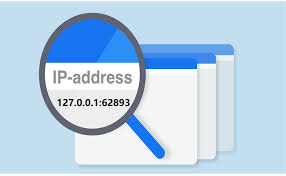Introduction to 127.0.1:62893
Welcome to the digital realm where 127.0.0.1:62893 reigns supreme! This mysterious combination of numbers may seem like a secret code to some, but in the world of computer networking and web development, it holds significant importance. Join us on a journey as we unravel the mystique behind 127.0.0.1:62893, exploring its history, purpose, usage, misconceptions, and troubleshooting tips along the way. Let’s dive deep into this hidden gem of cyberspace together!
The History and Evolution of 127.0.1:62893
Picture this: a humble yet powerful address that has been quietly shaping the world of computer networking. 127.0.1:62893 may seem like just a string of numbers and dots, but its significance runs deep within the realms of technology.
Originally defined in RFC1700 back in 1994, this localhost IP address was reserved for loopback testing purposes. Over time, it evolved to serve as a vital tool for developers and testers alike in ensuring applications run smoothly.
As web development flourished, so did the importance of 127.0.1:62893. It became synonymous with testing environments, allowing developers to debug their creations without impacting live websites.
With each passing year, advancements in networking technologies have only reinforced the relevance of this unique address. Today, 127.0.1:62893 continues to play a crucial role behind the scenes of countless digital innovations.
The journey of 127.0.1:62893 is not just a tale of numbers; it’s a narrative of adaptability and resilience in an ever-changing tech landscape – truly remarkable indeed!
The Purpose of 127.0.1:62893 in Computer Networking
Ever wondered about the mysterious 127.0.1:62893 lurking in the depths of computer networking? This unique address, also known as localhost, holds significant importance in the realm of network communication. It serves as a loopback interface, allowing a device to communicate with itself.
In computer networking, 127.0.1:62893 plays a crucial role in testing and troubleshooting network-related issues without affecting external systems. It enables developers to run diagnostics on their own machine, ensuring that applications function correctly before deployment.
By directing traffic back to the local system, 127.0.1:62893 facilitates seamless communication between different software components running on the same device. This internal feedback loop enhances efficiency and streamlines development processes.
Understanding the purpose of 127.0.1:62893 is essential for network administrators and developers alike, as it empowers them to create robust and reliable systems by harnessing the power of self-communication within a single device’s environment.
How 127.0.1:62893 is Used in Web Development and Testing
When it comes to web development and testing, the use of 127.0.1:62893 plays a crucial role in ensuring that websites and applications function as intended before being deployed live on the internet. This specific address is commonly referred to as the loopback address, allowing developers to test their projects locally within their own system.
By utilizing 127.0.1:62893, developers can simulate a server environment on their own machine, enabling them to troubleshoot issues, test functionalities, and debug code without affecting the actual production servers or risking potential downtime for users.
Web developers often rely on this address during the development phase to ensure seamless integration of different components, check database connectivity, validate forms, and verify overall performance before making their work accessible to users online.
In essence, 127.0.1:62893 serves as a sandbox environment where developers can experiment with various elements of their projects in isolation from external factors and dependencies – ultimately leading to more stable and reliable web applications when they go live.
Common Misconceptions About 127.0.1:62893
One common misconception about 127.0.1:62893 is that it can be accessed over the internet like a regular website, but in reality, this address refers to the localhost of a device itself. It is not publicly accessible from external networks.
Another misconception is that 127.0.1:62893 can only be used for web development and testing purposes. While it is commonly utilized in these areas, its primary function remains as a loopback address to test network connections locally.
Some users mistakenly believe that using 127.0.1:62893 will slow down their internet speed or affect their network performance negatively. This is incorrect as traffic to this address stays within the local device and does not impact external connectivity.
It’s essential to understand the true purpose of 127.0.1:62893 to make the most out of its capabilities without falling prey to misconceptions that may hinder effective utilization in computer networking and web development scenarios
Troubleshooting Common Issues with 127.0.1:628
When encountering issues with 127.0.0.1:62893, one common problem is firewall restrictions blocking the port. Ensure the port is open for proper communication within your network.
Another issue could be related to misconfigured settings in your development environment or web server software. Double-check your configurations to ensure everything is set up correctly.
If you’re still facing difficulties, consider restarting your services or even rebooting your system as a last resort to resolve any lingering issues.
Remember, troubleshooting problems with 127.0.0.1:62893 may require patience and attention to detail but overcoming these challenges will ultimately enhance your understanding of networking and web development processes.




